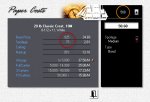Hey gang:
Thought I'd drop in and say hello. HELLO!
Anyhoo, whole set of new problems has popped up at me this year, so I need some potential advice that could help me out within this predicament.
Subject: house stock vs. customer-centric mindset
My print company has a small press department that deals with envelopes, business cards, letterheads and so on. The small things, and it needs to be reorganized as per my orders.
One of the biggest issues I see is the reorganization of paper selection within small press.
Sales has always given customers the widest selection of paper that they can get. With this, customers can get whatever paper they so choose that we have access too. We have 100+ types of envelopes, paper stock that we use for small press. Of course, we have now been using JIT procedures so we do not have to keep an inventory. Makes sense of course. However, as time has effortlessly moved the shop has accumulated a lot of extra stock. Why you might ask? Well those pesky A-10 envelopes that the customer only wanted 500 of and one carton was 1000 kind of screwed up that system. Multiply that by the A-2's, A-6's, A-7's, #10's, tons of others and you get the idea.
On top of the fact that management loves to hoard paper, world war 2 mindset I'm afraid, it becomes a never ending battle between everyone.
I have many divides on the subject:
1) Sales - They wish to give customers the widest selection to choose what the customer feels is best. Makes sense of course as I stated, but then we get issues with runaway inventory.
2) Management - If we paid for it, why chuck it if there are extras? Why not save it for another job? This would work if only the sales cared about selling the extra stock, which they are not.
3) My Solution - I've put this plan in the works, but getting a lot of backlash. Very few options of stock, if customers want custom they have to pay extra for it and we keep no inventory in order to incorporate JIT practices. On top of that it cleans up a large section of the plant.
Any advice on how to handle some of the viewpoints on this subject? JIT is lean, and making it happen actually isn't that hard, its just getting people on board that is the complication.
Thought I'd drop in and say hello. HELLO!
Anyhoo, whole set of new problems has popped up at me this year, so I need some potential advice that could help me out within this predicament.
Subject: house stock vs. customer-centric mindset
My print company has a small press department that deals with envelopes, business cards, letterheads and so on. The small things, and it needs to be reorganized as per my orders.
One of the biggest issues I see is the reorganization of paper selection within small press.
Sales has always given customers the widest selection of paper that they can get. With this, customers can get whatever paper they so choose that we have access too. We have 100+ types of envelopes, paper stock that we use for small press. Of course, we have now been using JIT procedures so we do not have to keep an inventory. Makes sense of course. However, as time has effortlessly moved the shop has accumulated a lot of extra stock. Why you might ask? Well those pesky A-10 envelopes that the customer only wanted 500 of and one carton was 1000 kind of screwed up that system. Multiply that by the A-2's, A-6's, A-7's, #10's, tons of others and you get the idea.
On top of the fact that management loves to hoard paper, world war 2 mindset I'm afraid, it becomes a never ending battle between everyone.
I have many divides on the subject:
1) Sales - They wish to give customers the widest selection to choose what the customer feels is best. Makes sense of course as I stated, but then we get issues with runaway inventory.
2) Management - If we paid for it, why chuck it if there are extras? Why not save it for another job? This would work if only the sales cared about selling the extra stock, which they are not.
3) My Solution - I've put this plan in the works, but getting a lot of backlash. Very few options of stock, if customers want custom they have to pay extra for it and we keep no inventory in order to incorporate JIT practices. On top of that it cleans up a large section of the plant.
Any advice on how to handle some of the viewpoints on this subject? JIT is lean, and making it happen actually isn't that hard, its just getting people on board that is the complication.











